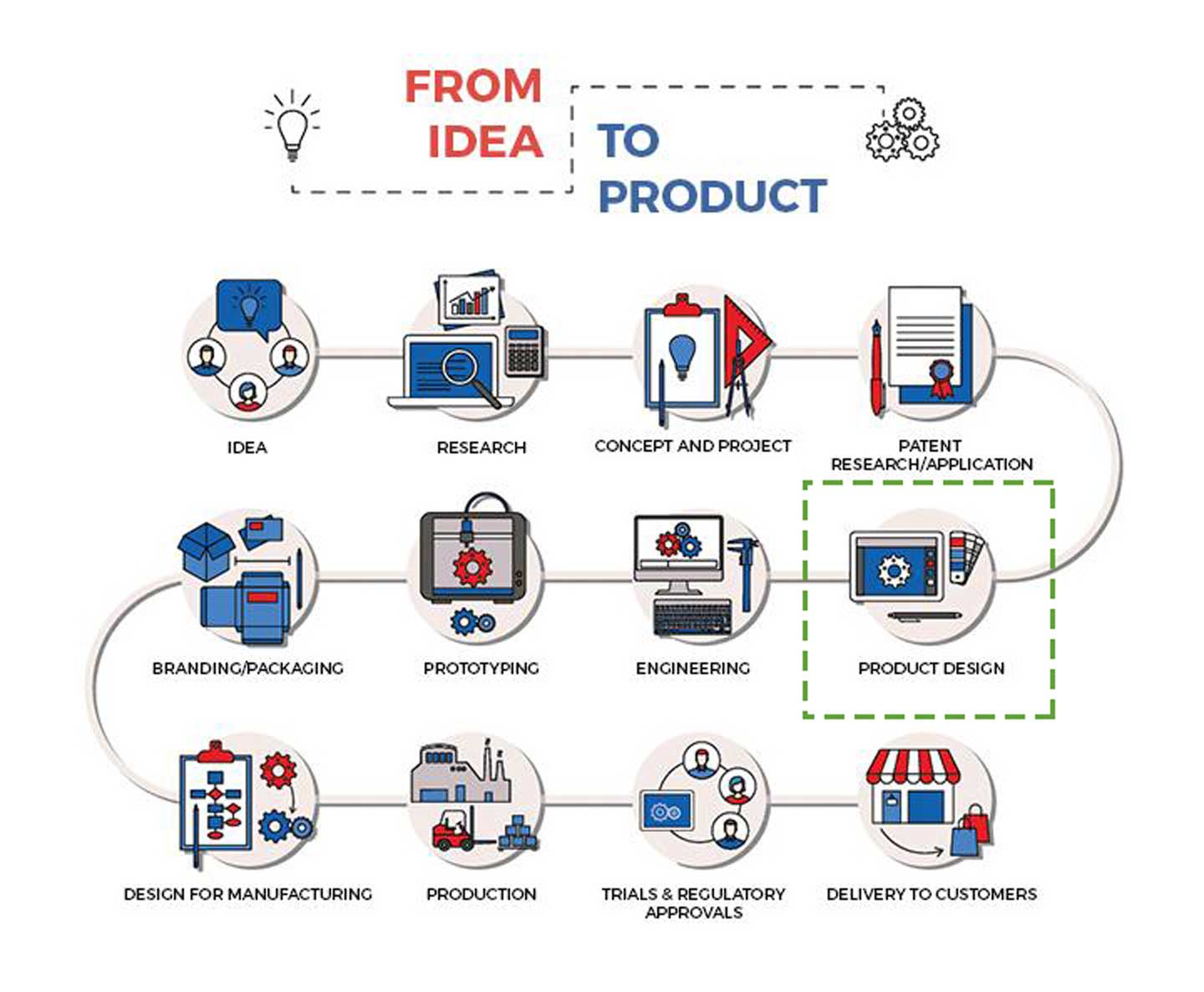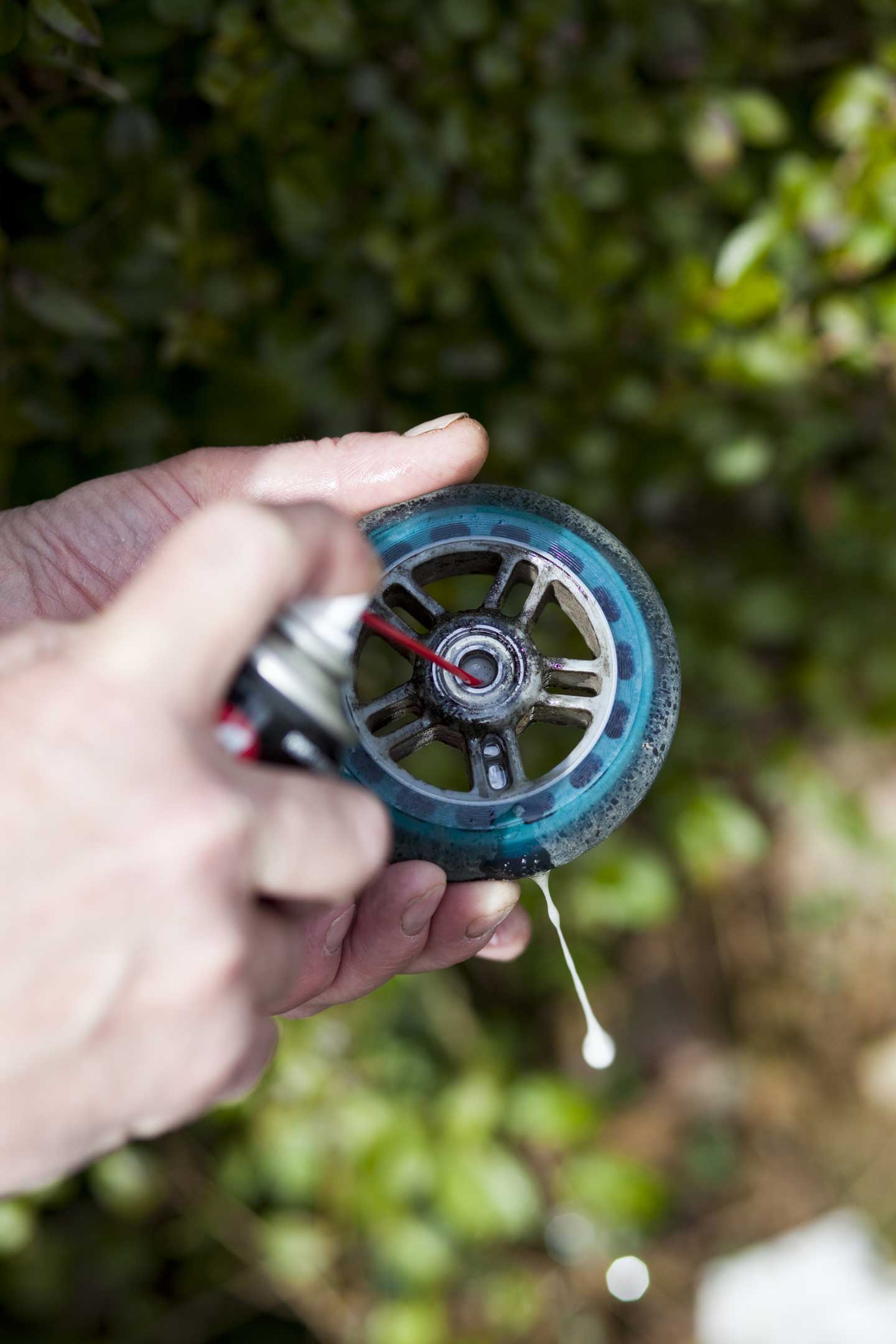Learn what approach to take as you design your product
In this
blog series, we deep dive into each stage of the idea to product lifecycle, from identifying a problem and formulating an idea through production and marketing. In each post, we’ll focus on one of the twelve unique aspects of the cycle and its impact on the end product.
Stage 5 of 12: Product Design

Now that you’ve completed the more analytical stages of the idea to product lifecycle, it’s time to move onto the fifth stage: designing the product.
What is product design?
Product design is
problem-solving; “visualizing the needs of the user and bringing a solution.” link Your product should improve the life of the consumer by satisfying his or her needs. Product design relies on the first four analytical stages of the idea to product lifecycle, as well as a design-thinking approach.
What is design thinking?
“Design thinking is an iterative process in which we seek to understand the user, challenge assumptions, and redefine problems in an attempt to identify alternative strategies and solutions that might not be instantly apparent with our initial level of understanding.” In order to effectively design your product, you have to understand the problem that you are attempting to solve and the consumer you are serving. This approach is important to the idea to product lifecycle because it emphasizes the importance of conducting a project with a purpose.
Remember who you’re designing for, not just what you’re designing
At this stage in the cycle, you’ve spent a lot of time researching the market and the comparable products that already exist. In that time, it’s important that you don’t lose sight of the problem you are attempting to solve. It’s easy to get caught up in what others have done before, but the real focus should be on solving your customers’ problem.
As a product designer, you are not just involved in the overall look and feel of the product, you should be involved in the cycle from the beginning: identifying a problem. This allows you, as a product designer, to be invested in the project as a whole, using the idea to product lifecycle to understand your project from start to finish. When designing a product, you can also think about the customer’s user experience as a cycle; from them identifying a problem in their lives through discovering your product as a solution to their problem, resulting in their satisfaction.
The simpler, the better?
“Design is not just what it looks and feels like. Design is how it works”
– Steve Jobs
Thinking back to the
concept and project stage link of the cycle, we focused on deciding the functions and features necessary to satisfy customer needs. In the product design stage, we will revisit functions and features.
Parts should not be added to your design just for aesthetic purposes. Just like the project as a whole, every design feature should serve a purpose, otherwise, it just creates unnecessary manufacturing work.
Sometimes the simplest products are the best solutions to their respective problems.
Stick with it

Post-it notes are an example of a product that meets the needs of its consumers without being overly-complicated with unnecessary design aesthetics. Sticky notes were developed by accident. Just like some of the other products we’ve discussed at the beginning of this series, sticky notes, or at least the adhesive part of them, were intended for a different purpose. The adhesive was meant to be super strong, but instead, the scientist created a less sticky, easily-removable adhesive. The adhesive combined with yellow scratch paper created the perfect solution for consumers in need of a way to write notes that could be stuck down and removed with ease. Since the product was invented in the 1960s, only minor changes have been made, such as color, size, and shape. However, none of these changes have been at the detriment to the function or effectiveness of the product. Recently, 3M released sticky notes for more extreme circumstances that can stick to more surfaces, even wet ones.

WD-40 is another product that’s actually quite simple but took a while to get there. If you’re unfamiliar, WD-40 stands for water displacement fortieth formula, meaning that the developers behind the product had to go through 40 different attempts before arriving at the one sold worldwide today. Despite the extensive effort to perfect the formula, the product itself is quite simple: a spray can. The only changes that have been made to it in recent times is the thin red straw attached to the nozzle to allow for more accurate spraying. There are no frills, just function, but both it’s design and functionality are effective at meeting consumer needs.
Design is more than the aesthetics
When designing your product, don’t get caught up in the aesthetics, remember that whatever you design should serve the purpose of solving the problem you identified at the beginning. If you get off track, it may be necessary to revisit some of the previous stages.
What’s Next?
The
next stage focuses on the engineering design of the product and the software that will allow you to design the parts for your product.
 Now that you’ve completed the more analytical stages of the idea to product lifecycle, it’s time to move onto the fifth stage: designing the product.
Now that you’ve completed the more analytical stages of the idea to product lifecycle, it’s time to move onto the fifth stage: designing the product.
 Post-it notes are an example of a product that meets the needs of its consumers without being overly-complicated with unnecessary design aesthetics. Sticky notes were developed by accident. Just like some of the other products we’ve discussed at the beginning of this series, sticky notes, or at least the adhesive part of them, were intended for a different purpose. The adhesive was meant to be super strong, but instead, the scientist created a less sticky, easily-removable adhesive. The adhesive combined with yellow scratch paper created the perfect solution for consumers in need of a way to write notes that could be stuck down and removed with ease. Since the product was invented in the 1960s, only minor changes have been made, such as color, size, and shape. However, none of these changes have been at the detriment to the function or effectiveness of the product. Recently, 3M released sticky notes for more extreme circumstances that can stick to more surfaces, even wet ones.
Post-it notes are an example of a product that meets the needs of its consumers without being overly-complicated with unnecessary design aesthetics. Sticky notes were developed by accident. Just like some of the other products we’ve discussed at the beginning of this series, sticky notes, or at least the adhesive part of them, were intended for a different purpose. The adhesive was meant to be super strong, but instead, the scientist created a less sticky, easily-removable adhesive. The adhesive combined with yellow scratch paper created the perfect solution for consumers in need of a way to write notes that could be stuck down and removed with ease. Since the product was invented in the 1960s, only minor changes have been made, such as color, size, and shape. However, none of these changes have been at the detriment to the function or effectiveness of the product. Recently, 3M released sticky notes for more extreme circumstances that can stick to more surfaces, even wet ones.
 WD-40 is another product that’s actually quite simple but took a while to get there. If you’re unfamiliar, WD-40 stands for water displacement fortieth formula, meaning that the developers behind the product had to go through 40 different attempts before arriving at the one sold worldwide today. Despite the extensive effort to perfect the formula, the product itself is quite simple: a spray can. The only changes that have been made to it in recent times is the thin red straw attached to the nozzle to allow for more accurate spraying. There are no frills, just function, but both it’s design and functionality are effective at meeting consumer needs.
WD-40 is another product that’s actually quite simple but took a while to get there. If you’re unfamiliar, WD-40 stands for water displacement fortieth formula, meaning that the developers behind the product had to go through 40 different attempts before arriving at the one sold worldwide today. Despite the extensive effort to perfect the formula, the product itself is quite simple: a spray can. The only changes that have been made to it in recent times is the thin red straw attached to the nozzle to allow for more accurate spraying. There are no frills, just function, but both it’s design and functionality are effective at meeting consumer needs.
























